formerly eScholarship Editions


|
|
|
|
Your search for
'History' in subject
found 514 book(s). | Modify Search | Displaying 281 - 300 of 514 book(s) | |
| 281. |  | Title: Selected letters of Alessandra Strozzi Author: Macinghi Strozzi, Alessandra 1407-1471 Published: University of California Press, 1997 Subjects: History | Renaissance History | Women's Studies | European Studies | Literature in Translation | Autobiography | European History | Letters Publisher's Description: The letters of Alessandra Strozzi provide a vivid and spirited portrayal of life in fifteenth-century Florence. Among the richest autobiographical materials to survive from the Italian Renaissance, the letters reveal a woman who fought stubbornly to preserve her family's property and position in adverse circumstances, and who was an acute observer of Medicean society. Her letters speak of political and social status, of the concept of honor, and of the harshness of life, including the plague and the loss of children. They are also a guide to Alessandra's inner life over a period of twenty-three years, revealing the pain and sorrow, and, more rarely, the joy and triumph, with which she responded to the events unfolding around her.This edition includes translations, in full or in part, of 35 of the 73 extant letters. The selections carry forward the story of Alessandra's life and illustrate the range of attitudes, concerns, and activities which were characteristic of their author. [brief] Similar Items |
| 282. | 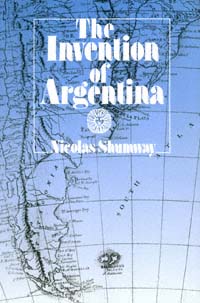 | Title: The invention of Argentina Author: Shumway, Nicolas Published: University of California Press, 1991 Subjects: History | Latin American History | Latin American Studies | Intellectual History Similar Items |
| 283. | 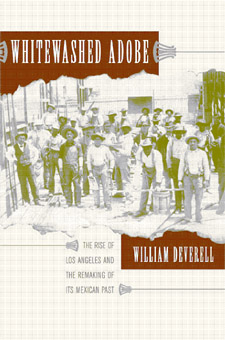 | Title: Whitewashed adobe: the rise of Los Angeles and the remaking of its Mexican past Author: Deverell, William Francis Published: University of California Press, 2004 Subjects: History | Californian and Western History | Chicano Studies | American Studies | Urban Studies Publisher's Description: Chronicling the rise of Los Angeles through shifting ideas of race and ethnicity, William Deverell offers a unique perspective on how the city grew and changed. Whitewashed Adobe considers six different developments in the history of the city - including the cementing of the Los Angeles River, the outbreak of bubonic plague in 1924, and the evolution of America's largest brickyard in the 1920s. In an absorbing narrative supported by a number of previously unpublished period photographs, Deverell shows how a city that was once part of Mexico itself came of age through appropriating - and even obliterating - the region's connections to Mexican places and people. Deverell portrays Los Angeles during the 1850s as a city seething with racial enmity due to the recent war with Mexico. He explains how, within a generation, the city's business interests, looking for a commercially viable way to establish urban identity, borrowed Mexican cultural traditions and put on a carnival called La Fiesta de Los Angeles. He analyzes the subtle ways in which ethnicity came to bear on efforts to corral the unpredictable Los Angeles River and shows how the resident Mexican population was put to work fashioning the modern metropolis. He discusses how Los Angeles responded to the nation's last major outbreak of bubonic plague and concludes by considering the Mission Play, a famed drama tied to regional assumptions about history, progress, and ethnicity. Taking all of these elements into consideration, Whitewashed Adobe uncovers an urban identity - and the power structure that fostered it - with far-reaching implications for contemporary Los Angeles. [brief] Similar Items |
| 284. |  | Title: History, religion, and antisemitism Author: Langmuir, Gavin I Published: University of California Press, 1990 Subjects: History | Medieval History | Judaism | Sociology | Medieval Studies | Middle Eastern History Publisher's Description: Gavin I. Langmuir's work on the formation and nature of antisemitism has earned him an international reputation. In History, Religion, and Antisemitism he bravely confronts the problems that arise when historians have to describe and explain religious phenomena, as any historian of antisemitism must. How, and to what extent, can the historian be objective? Is it possible to discuss Christian attitudes toward Jews, for example, without adopting the historical explanations of those whose thoughts and actions one is discussing? What, exactly, does the historian mean by "religion" or "religious"? Langmuir's original and stimulating responses to these questions reflect his inquiry into the approaches of anthropology, sociology, and psychology and into recent empirical research on the functioning of the mind and the nature of thought. His distinction between religiosity, a property of individuals, and religion, a social phenomenon, allows him to place unusual emphasis on the role of religious doubts and tensions and the irrationality they can produce. Defining antisemitism as irrational beliefs about Jews, he distinguishes Christian anti-Judaism from Christian antisemitism, demonstrates that antisemitism emerged in the twelfth and thirteenth centuries because of rising Christian doubts, and sketches how the revolutionary changes in religion and mentality in the modern period brought new faiths, new kinds of religious doubt, and a deadlier expression of antisemitism. Although he developed it in dealing with the difficult question of antisemitism, Langmuir's approach to religious history is important for historians in all areas. [brief] Similar Items |
| 285. |  | Title: A science of impurity: water analysis in nineteenth century Britain Author: Hamlin, Christopher 1951- Published: University of California Press, 1990 Subjects: History | European History | History and Philosophy of Science Similar Items |
| 286. | 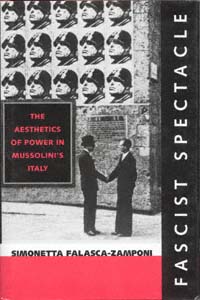 | Title: Fascist spectacle: the aesthetics of power in Mussolini's Italy Author: Falasca-Zamponi, Simonetta 1957- Published: University of California Press, 1997 Subjects: History | European History | Popular Culture | European Studies | Politics Publisher's Description: This richly textured cultural history of Italian fascism traces the narrative path that accompanied the making of the regime and the construction of Mussolini's power. Simonetta Falasca-Zamponi reads fascist myths, rituals, images, and speeches as texts that tell the story of fascism. Linking Mussolini's elaboration of a new ruling style to the shaping of the regime's identity, she finds that in searching for symbolic means and forms that would represent its political novelty, fascism in fact brought itself into being, creating its own power and history.Falasca-Zamponi argues that an aesthetically founded notion of politics guided fascist power's historical unfolding and determined the fascist regime's violent understanding of social relations, its desensitized and dehumanized claims to creation, its privileging of form over ethical norms, and ultimately its truly totalitarian nature. [brief] Similar Items |
| 287. | 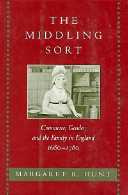 | Title: The middling sort: commerce, gender, and the family in England, 1680-1780 Author: Hunt, Margaret R 1953- Published: University of California Press, 1996 Subjects: History | Gender Studies | Social Science Publisher's Description: To be one of "the middling sort" in urban England in the late seventeenth or eighteenth century was to live a life tied, one way or another, to the world of commerce. In a lively study that combines narrative and alternately poignant and hilarious anecdotes with convincing analysis, Margaret R. Hunt offers a view of middling society during the hundred years that separated the Glorious Revolution from the factory age. Thanks to her exploration of many family papers and court records, Hunt is able to examine what people thought, felt, and valued. She finds that early capitalism and early modern family life were far more insecure than their "classical" models supposed.Commercial needs and social needs coincided to a large extent. The family is central to Hunt's story, and she shows how financial struggles brought conflict, ambiguity, and tension to the home. She investigates the way gender intertwined with class and family hierarchy and the way many businesses survived as precarious successes, secured through the sacrifices made by female as well as male family members. The Middling Sort offers a dynamic portrait of a society struggling to minimize the considerable social and psychic dislocation that accompanied England's launch of a full-scale market economy. [brief] Similar Items |
| 288. |  | Title: The abacus and the sword: the Japanese penetration of Korea, 1895-1910 Author: Duus, Peter 1933- Published: University of California Press, 1995 Subjects: History | Asian History | Asian Studies | Japan | East Asia Other Publisher's Description: What forces were behind Japan's emergence as the first non-Western colonial power at the turn of the twentieth century? Peter Duus brings a new perspective to Meiji expansionism in this pathbreaking study of Japan's acquisition of Korea, the largest of its colonial possessions. He shows how Japan's drive for empire was part of a larger goal to become the economic, diplomatic, and strategic equal of the Western countries who had imposed a humiliating treaty settlement on the country in the 1850s.Duus maintains that two separate but interlinked processes, one political/military and the other economic, propelled Japan's imperialism. Every attempt at increasing Japanese political influence licensed new opportunities for trade, and each new push for Japanese economic interests buttressed, and sometimes justified, further political advances. The sword was the servant of the abacus, the abacus the agent of the sword.While suggesting that Meiji imperialism shared much with the Western colonial expansion that provided both model and context, Duus also argues that it was "backward imperialism" shaped by a sense of inferiority vis-à-vis the West. Along with his detailed diplomatic and economic history, Duus offers a unique social history that illuminates the motivations and lifestyles of the overseas Japanese of the time, as well as the views that contemporary Japanese had of themselves and their fellow Asians. [brief] Similar Items |
| 289. | 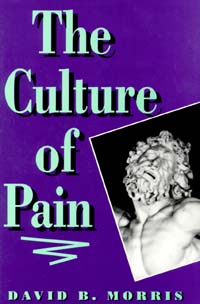 | Title: The culture of pain Author: Morris, David B Published: University of California Press, 1991 Subjects: Science | Medicine | Literature | History Similar Items |
| 290. | 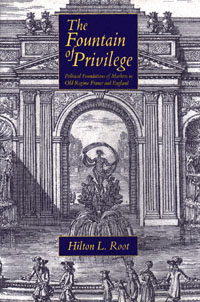 | Title: The fountain of privilege: political foundations of markets in Old Regime France and England Author: Root, Hilton L Published: University of California Press, 1994 Subjects: History | Politics | Economics and Business | European History | Sociology | French Studies Publisher's Description: Hilton Root's new book applies contemporary economic and political theory to answer long-standing historical questions about modernization. It contrasts political stability in Georgian England with the collapse of the Old Regime in France. Why did a century of economic expansion rupture France's political foundations while leaving those of Britain intact? Comparing the political and financial institutions of the two states, Root argues that the French monarchy's tight control of markets created unresolvable social conflicts whereas England's broader power base permitted the wider distribution of economic favors, resulting in more flexible and efficient markets. [brief] Similar Items |
| 291. |  | Title: From fascism to libertarian communism: Georges Valois against the Third Republic Author: Douglas, Allen 1949- Published: University of California Press, 1993 Subjects: History | European History | French Studies | Politics Publisher's Description: Georges Valois is the enigma who stands at the center of French fascism. Writer, publisher, economic and political organizer, Valois went from adolescent anarchism to fascism and finally to libertarian socialism. His career has mystified scholars, as it did his contemporaries. From Fascism to Libertarian Communism is the first study of Valois to take his entire life and work as its focus, explaining how certain basic assumptions and patterns of thought took form in strikingly different ideological options. Douglas's work, based on a thorough examination of sources from police archives to personal papers and interviews, provides a convincing explanation of this quixotic figure - a man who founded French fascism only to turn to the radical left and eventually die as a resister in Bergen-Belsen.At a time when radical socialism is in decline and neofascist movements are gaining renewed support - in France and elsewhere - this original interpretation of Georges Valois's life and thought could not be more timely. [brief] Similar Items |
| 292. |  | Title: Law and disorder on the Narova River: the Kreenholm strike of 1872 Author: Zelnik, Reginald E Published: University of California Press, 1995 Subjects: History | Labor Studies | European History | European Studies Publisher's Description: Reginald Zelnik uses a single episode - a militant strike at the Kreenholm factory, Europe's largest textile plant - to explore the broad historical moment. In examining this crucial event of Russian history he sheds fresh light on local power relations, high politics in St. Petersburg, controversies over the rule of law, and the origins of the Russian labor movement. Zelnik sees this pivotal moment in Russian labor history as the beginning step in the series of conflicts that eventually led to the upheavals of the early twentieth century. [brief] Similar Items |
| 293. |  | Title: Stalin's forgotten Zion: Birobidzhan and the making of a Soviet Jewish homeland: an illustrated history, 1928-1996 Author: Weinberg, Robert E Published: University of California Press, 1998 Subjects: Jewish Studies | Russian and Eastern European Studies | History | Politics | Judaism Publisher's Description: Robert Weinberg and Bradley Berman's carefully documented and extensively illustrated book explores the Soviet government's failed experiment to create a socialist Jewish homeland. In 1934 an area popularly known as Birobidzhan, a sparsely populated region along the Sino-Soviet border some five thousand miles east of Moscow, was designated the national homeland of Soviet Jewry. Establishing the Jewish Autonomous Region was part of the Kremlin's plan to create an enclave where secular Jewish culture rooted in Yiddish and socialism could serve as an alternative to Palestine. The Kremlin also considered the region a solution to various perceived problems besetting Soviet Jews. Birobidzhan still exists today, but despite its continued official status Jews are a small minority of the inhabitants of the region. Drawing upon documents from archives in Moscow and Birobidzhan, as well as photograph collections never seen outside Birobidzhan, Weinberg's story of the Soviet Zion sheds new light on a host of important historical and contemporary issues regarding Jewish identity, community, and culture. Given the persistence of the "Jewish question" in Russia, the history of Birobidzhan provides an unusual point of entry into examining the fate of Soviet Jewry under communist rule. [brief] Similar Items |
| 294. | 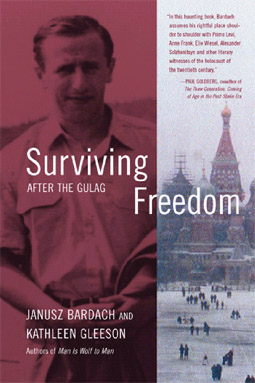 | Title: Surviving freedom: after the Gulag Author: Bardach, Janusz Published: University of California Press, 2003 Subjects: History | European Studies | Sociology | Politics | Russian and Eastern European Studies | Autobiography Publisher's Description: In 1941, as a Red Army soldier fighting the Nazis on the Belarussian front, Janusz Bardach was arrested, court-martialed, and sentenced to ten years of hard labor. Twenty-two years old, he had committed no crime. He was one of millions swept up in the reign of terror that Stalin perpetrated on his own people. In the critically acclaimed Man Is Wolf to Man, Bardach recounted his horrific experiences in the Kolyma labor camps in northeastern Siberia, the deadliest camps in Stalin's gulag system. In this sequel Bardach picks up the narrative in March 1946, when he was released. He traces his thousand-mile journey from the northeastern Siberian gold mines to Moscow in the period after the war, when the country was still in turmoil. He chronicles his reunion with his brother, a high-ranking diplomat in the Polish embassy in Moscow; his experiences as a medical student in the Stalinist Soviet Union; and his trip back to his hometown, where he confronts the shattering realization of the toll the war has taken, including the deaths of his wife, parents, and sister. In a trenchant exploration of loss, post-traumatic stress syndrome, and existential loneliness, Bardach plumbs his ordeal with honesty and compassion, affording a literary window into the soul of a Stalinist gulag survivor. Surviving Freedom is his moving account of how he rebuilt his life after tremendous hardship and personal loss. It is also a unique portrait of postwar Stalinist Moscow as seen through the eyes of a person who is both an insider and outsider. Bardach's journey from prisoner back to citizen and from labor camp to freedom is an inspiring tale of the universal human story of suffering and recovery. [brief] Similar Items |
| 295. |  | Title: Tokugawa village practice: class, status, power, law Author: Ooms, Herman Published: University of California Press, 1996 Subjects: History | Asian History | Japan | Law Publisher's Description: In contrast to modern Japanese citizens, during the Tokugawa period (1600-1868) villagers frequently resorted to lawsuits to settle conflicts. Herman Ooms uses colorful, skillfully analyzed case studies to trace the evolution of class and status conflicts through lawsuits and petitions in villages. Inspired by the work of Max Weber and Pierre Bourdieu, this exploration of social and legal history illuminates the texture and detail of village life, focusing on relations to authority.Opening with a story of an angry peasant woman's lifelong struggle against village authority (a story involving murder and revenge), Ooms highlights the role played by obscure historical actors including local elites, commoners, women, and outcastes. He also discusses the important role lineages played in village politics and examines the origins of discrimination against Japan's burakumin , or outcastes. [brief] Similar Items |
| 296. | 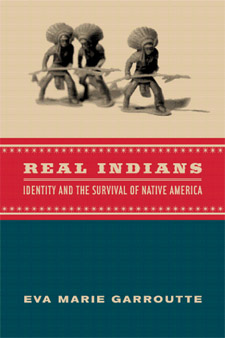 | Title: Real Indians: identity and the survival of Native America Author: Garroutte, Eva Marie 1962- Published: University of California Press, 2003 Subjects: Sociology | Native American Studies | Native American Ethnicity | History | American Studies Publisher's Description: At the dawn of the twenty-first century, America finds itself on the brink of a new racial consciousness. The old, unquestioned confidence with which individuals can be classified (as embodied, for instance, in previous U.S. census categories) has been eroded. In its place are shifting paradigms and . . . [more] Similar Items |
| 297. | 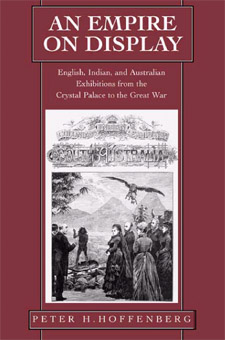 | Title: An empire on display: English, Indian, and Australian exhibitions from the Crystal Palace to the Great War Author: Hoffenberg, Peter H 1960- Published: University of California Press, 2001 Subjects: History | European History | Victorian History | Asian History | South Asia | Pacific Rim Studies | European Studies Publisher's Description: The grand exhibitions of the Victorian and Edwardian eras are the lens through which Peter Hoffenberg examines the economic, cultural, and social forces that helped define Britain and the British Empire. He focuses on major exhibitions in England, Australia, and India between the Great Exhibition of 1851 and the Festival of Empire sixty years later, taking special interest in the interactive nature of the exhibition experience, the long-term consequences for the participants and host societies, and the ways in which such popular gatherings revealed dissent as well as celebration. Hoffenberg shows how exhibitions shaped culture and society within and across borders in the transnational working of the British Empire. The exhibitions were central to establishing and developing a participatory imperial world, and each polity in that world provided distinctive information, visitors, and exhibits. Among the displays were commercial goods, working machines, and ethnographic scenes. Exhibits were intended to promote external commonwealth and internal nationalism. The imperial overlay did not erase significant differences but explained and used them in economic and cultural terms. The exhibitions in cities such as London, Sydney, and Calcutta were living and active public inventories of the Empire and its national political communities. The process of building and consuming such inventories persists today in the cultural bureaucracies, museums, and festivals of modern nation-states, the appeal to tradition and social order, and the actions of transnational bodies. [brief] Similar Items |
| 298. |  | Title: Henry Edwards Huntington: a biography Author: Thorpe, James Ernest 1915- Published: University of California Press, 1994 Subjects: History | California and the West | Californian and Western History | United States History | Autobiographies and Biographies Publisher's Description: A legendary book collector, a connoisseur of fine art, a horticulturist, and a philanthropist, Henry Edwards Huntington is perhaps best known as the founder of the world-renowned Huntington Library, Art Gallery, and Botanical Gardens in San Marino, California. James Thorpe's comprehensive biography of Huntington tells the richly human story of the man who became America's greatest book collector and was a leading figure in the development of southern California.Henry Edwards Huntington was born in New York State in 1850. He began working at the age of 17, eventually moved to California, and in later years was hailed for his vision in developing the street railway system that created the structure of the Los Angeles area. Always a lover of books, Huntington acquired many spectacular volumes - among them the complete Gutenberg Bible on vellum and the library of the Earl of Bridgewater. He also built a splendid art collection and established a grand botanical garden on the grounds of the buildings that would house his art and books. Then, in an act of philanthropy seldom equaled, he gave these great treasures to the public.The intimate side of Huntington's life appears in these pages, too. Thorpe has culled a vast trove of private letters, diaries, and other documents that reveal Huntington's exceptional personal qualities. The author's well-rounded biography of this unassuming yet gifted American is also richly evocative of the times in which Henry Edwards Huntington lived. [brief] Similar Items |
| 299. | 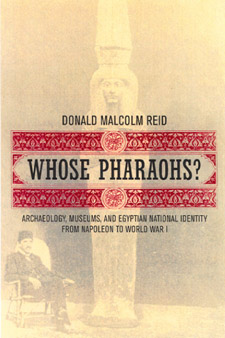 | Title: Whose pharaohs?: archaeology, museums, and Egyptian national identity from Napoleon to World War I Author: Reid, Donald M. (Donald Malcolm) 1940- Published: University of California Press, 2002 Subjects: History | Middle Eastern History | European History | Middle Eastern Studies | Classics | Art History Publisher's Description: Egypt's rich and celebrated ancient past has served many causes throughout history--in both Egypt and the West. Concentrating on the era from Napoleon's conquest and the discovery of the Rosetta Stone to the outbreak of World War I, this book examines the evolution of Egyptian archaeology in the context of Western imperialism and nascent Egyptian nationalism. Traditionally, histories of Egyptian archaeology have celebrated Western discoverers such as Champollion, Mariette, Maspero, and Petrie, while slighting Rifaa al-Tahtawi, Ahmad Kamal, and other Egyptians. This exceptionally well-illustrated and well-researched book writes Egyptians into the history of archaeology and museums in their own country and shows how changing perceptions of the past helped shape ideas of modern national identity. Drawing from rich archival sources in Egypt, the United Kingdom, and France, and from little-known Arabic publications, Reid discusses previously neglected topics in both scholarly Egyptology and the popular "Egyptomania" displayed in world's fairs and Orientalist painting and photography. He also examines the link between archaeology and the rise of the modern tourist industry. This richly detailed narrative discusses not only Western and Egyptian perceptions of pharaonic history and archaeology but also perceptions of Egypt's Greco-Roman, Coptic, and Islamic eras. Throughout this book, Reid demonstrates how the emergence of archaeology affected the interests and self-perceptions of modern Egyptians. In addition to uncovering a wealth of significant new material on the history of archaeology and museums in Egypt, Reid provides a fascinating window on questions of cultural heritage--how it is perceived, constructed, claimed, and contested. [brief] Similar Items |
| 300. | 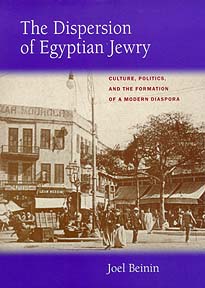 | Title: The dispersion of Egyptian Jewry: culture, politics, and the formation of a modern diaspora Author: Beinin, Joel 1948- Published: University of California Press, 1998 Subjects: History | Middle Eastern History | Religion | Judaism | Middle Eastern Studies | Jewish Studies Publisher's Description: In this provocative and wide-ranging history, Joel Beinin examines fundamental questions of ethnic identity by focusing on the Egyptian Jewish community since 1948. A complex and heterogeneous people, Egyptian Jews have become even more diverse as their diaspora continues to the present day. Central to Beinin's study is the question of how people handle multiple identities and loyalties that are dislocated and reformed by turbulent political and cultural processes. It is a question he grapples with himself, and his reflections on his experiences as an American Jew in Israel and Egypt offer a candid, personal perspective on the hazards of marginal identities. [brief] Similar Items |